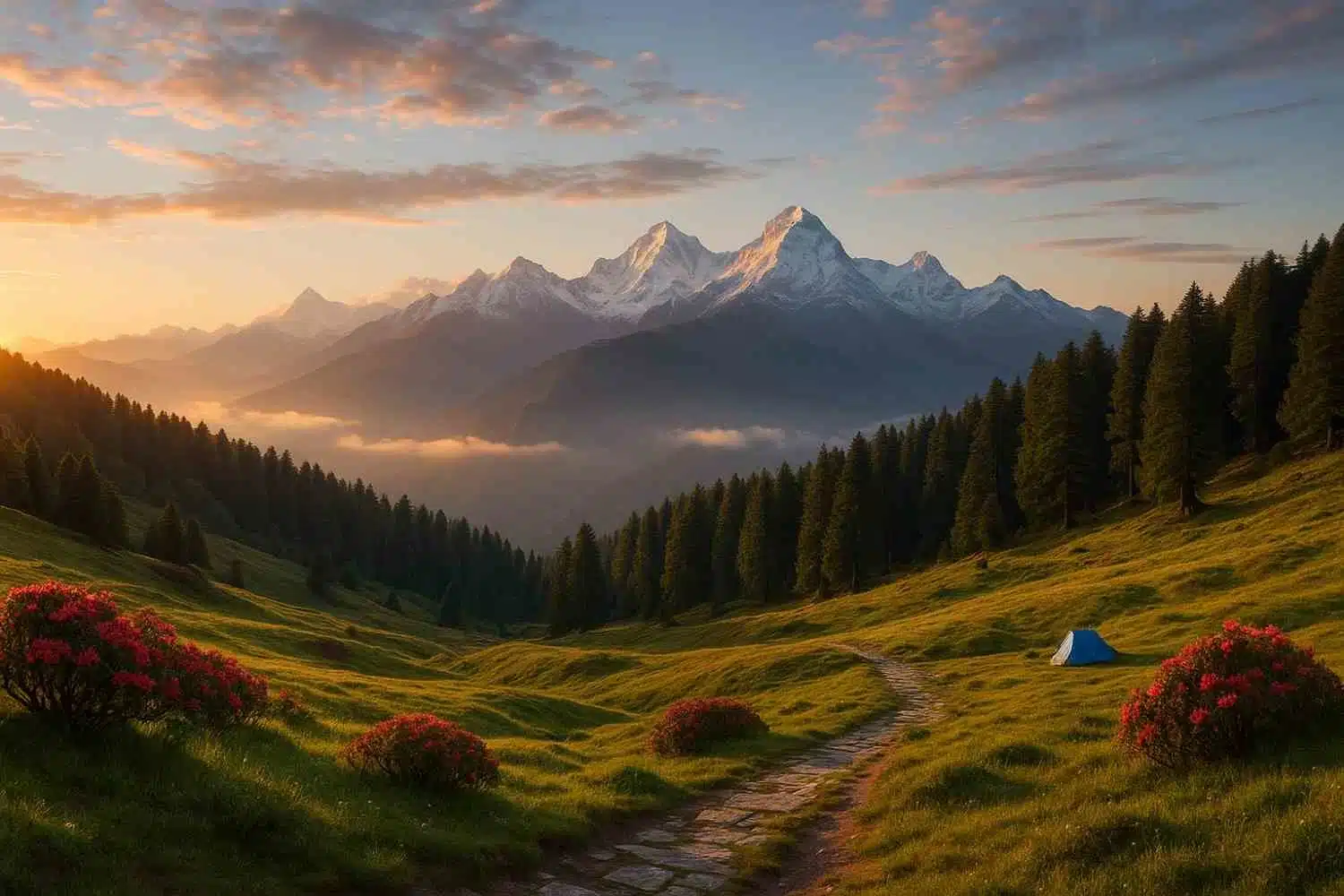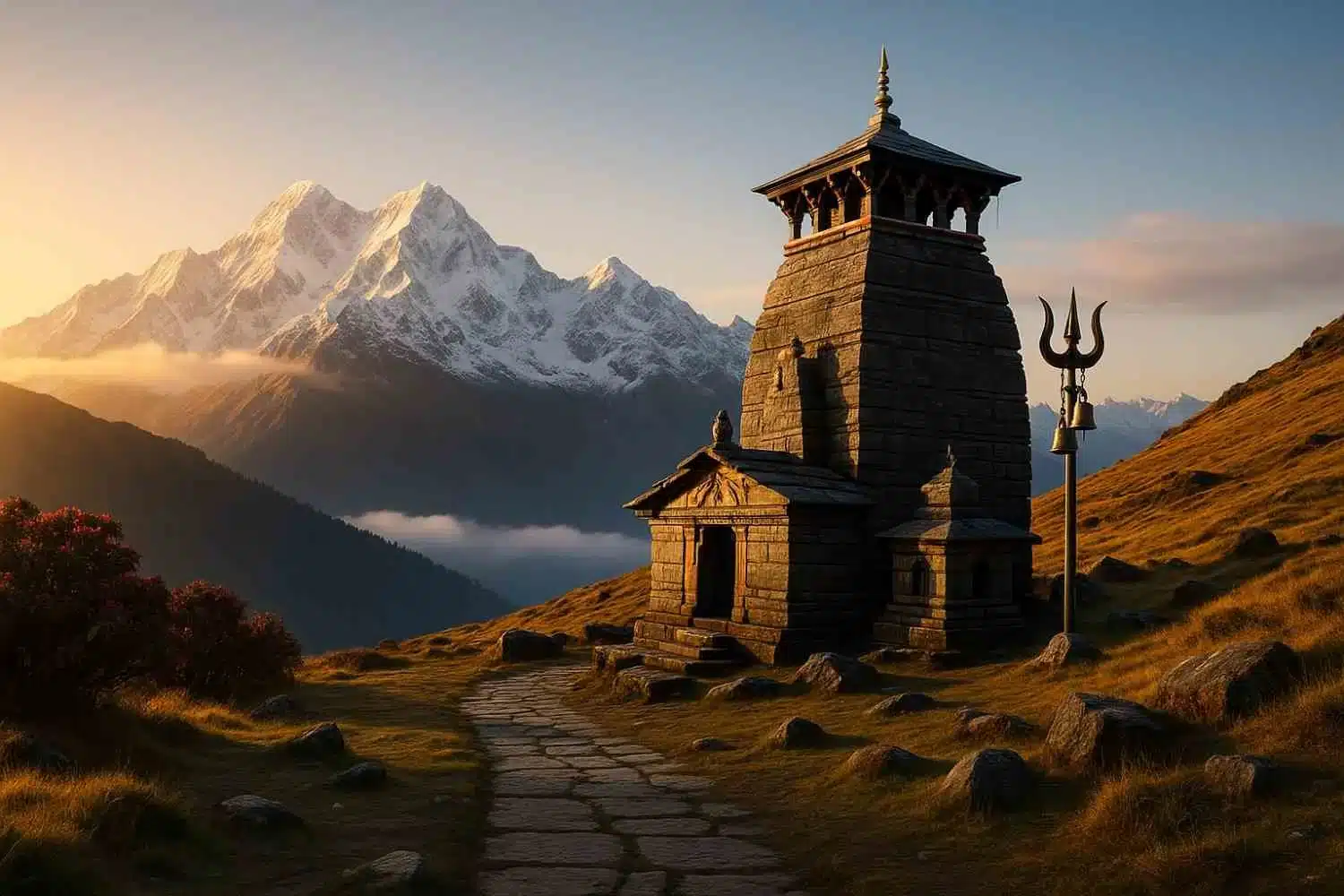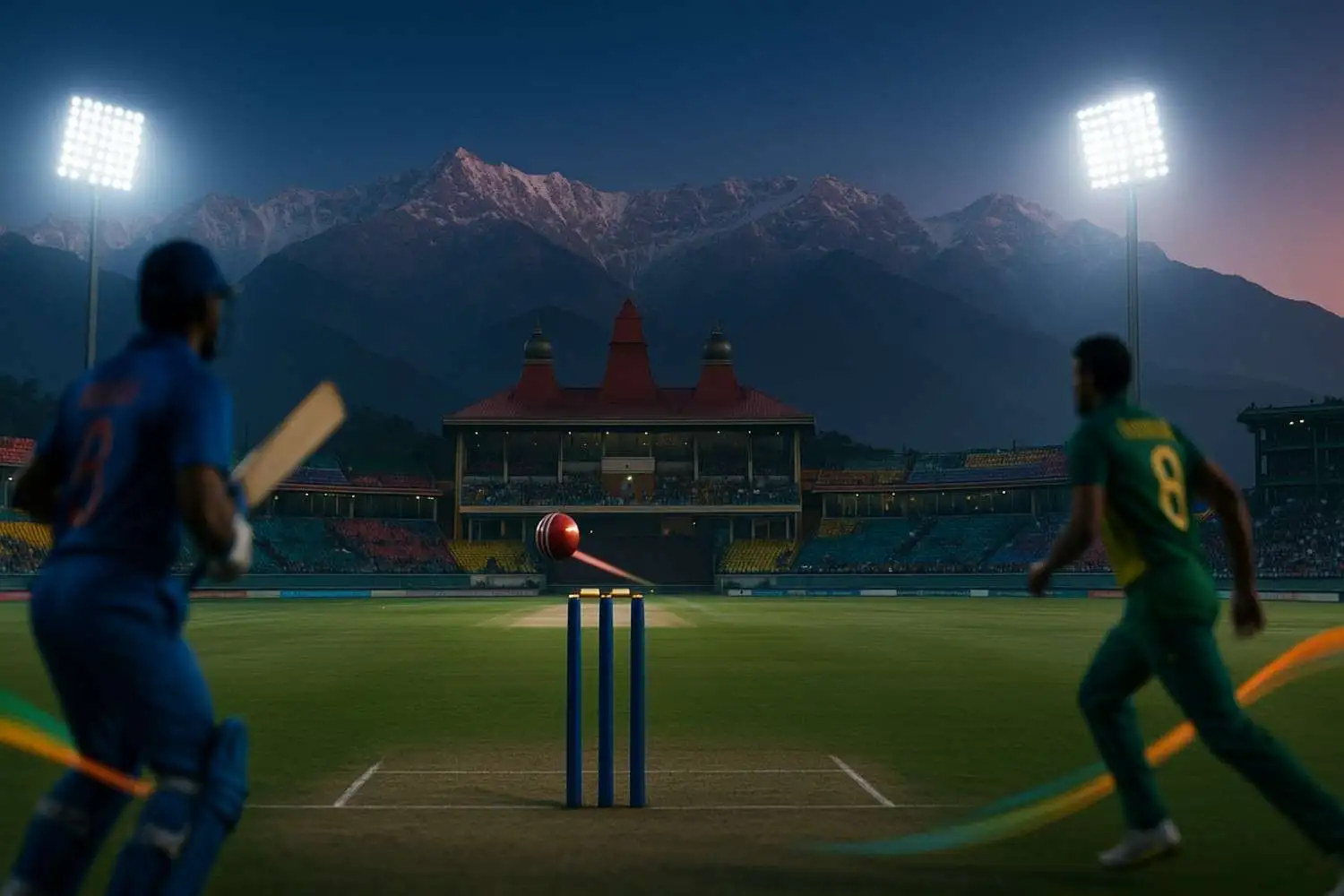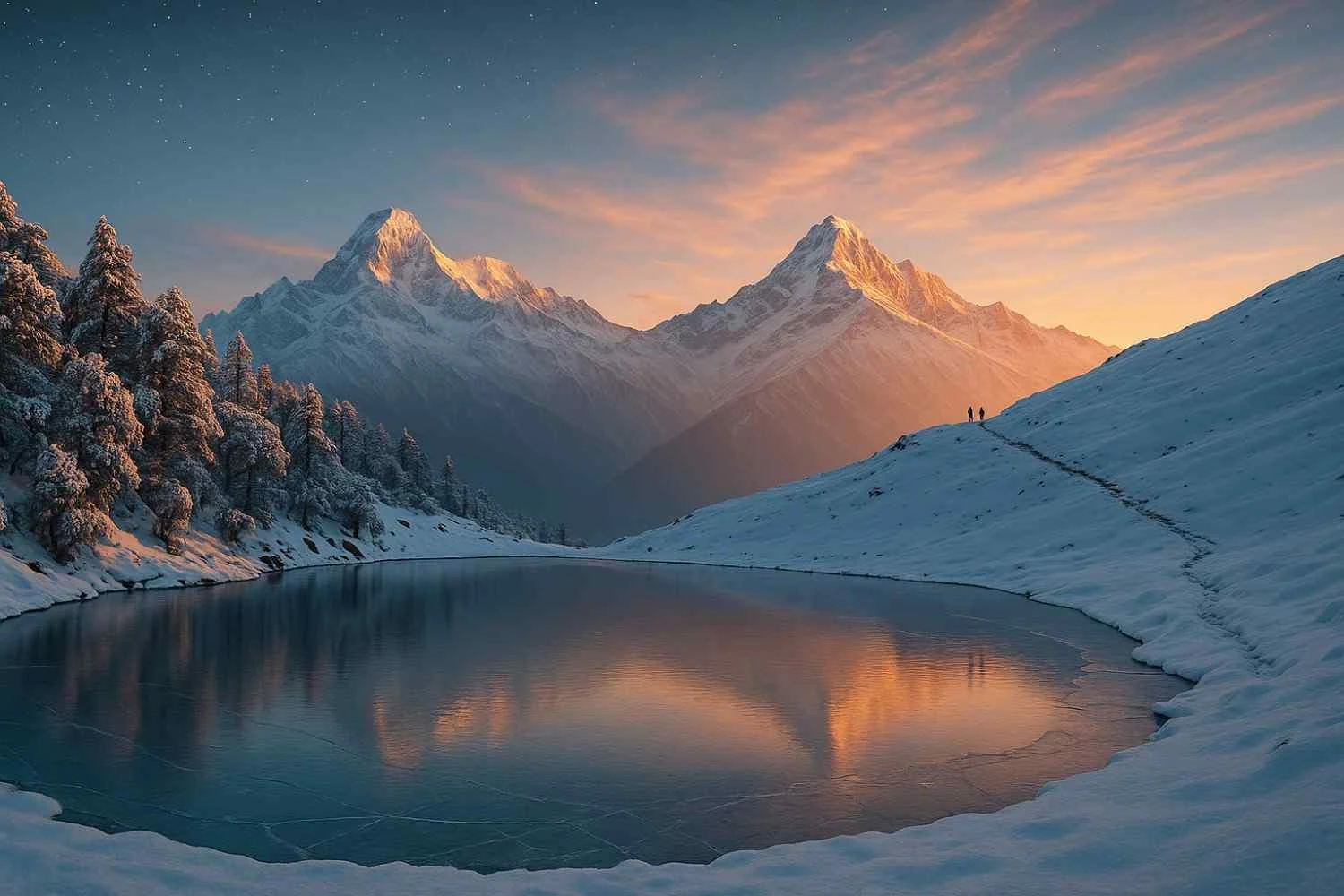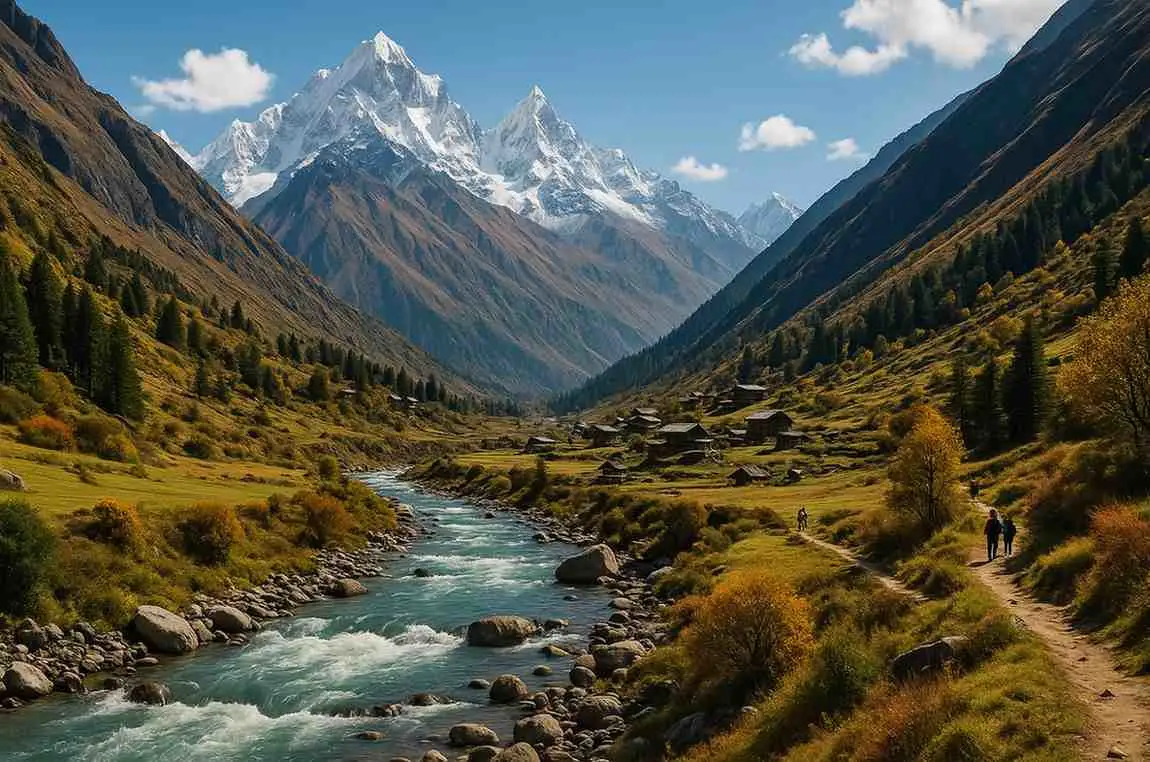Tucked high in the Himalayas, the Spiti Valley in Himachal Pradesh is often called the “Cold Desert of Himachal” — an arid, rugged terrain of vast skies, remote villages, and timeless monasteries. In 2025, it’s trending among travellers seeking off‑beat, high‑altitude adventures beyond the usual hill‑station circuit. Whether you’re drawn by snow‑capped passes, starlit campsites, or spiritual calm, this guide will walk you through the best time to go, how to plan your budget, a crisp itinerary, must‑see places, and smart travel tips.
Here’s everything you need to know before planning your unforgettable trip to Spiti Valley.
Quick Summary Table
| Category | Details |
| Location | Himachal Pradesh, India |
| Best Time | May–October |
| Ideal Duration | 7–10 days |
| Budget Range | ₹12,000 – ₹25,000 (per person) |
| Top Attractions | Kaza, Key Monastery, Chandratal, Langza |
| Connectivity | Road via the Manali or Shimla routes |
How to Reach Spiti Valley
By Road: via Manali–Kaza and Shimla–Kaza routes
The two main access routes into the Spiti Valley are:
- Via Manali: You travel from Manali through the Atal Tunnel / Rohtang Pass, onward via Kunzum Pass and Losar into Kaza. This route is shorter but higher and more prone to closures in winter.
- Via Shimla–Kinnaur: Starting from Shimla, moving through Rampur, Kinnaur and then along NH 505 into Spiti. This route offers more gradual acclimatisation to altitude and stays open longer.
Distances/travel times/permits
From Manali to Kaza is about ~180 km, but because of mountainous terrain, expect 6‑8 hours depending on conditions.
If coming from Delhi or Chandigarh, you’ll first get to Shimla or Manali, then proceed. For example, from Chandigarh to Spiti via Shimla‐Kinnaur is part of the circuit.
Permit note: If you enter via the Manali side, you may need the Inner Line Permit (ILP) or transit permit in some cases — always check locally.
Which route is better to reach Spiti — Manali or Shimla?
- If you want quicker access and are comfortable with high altitude, the Manali route is viable.
- If you prefer gradual acclimatisation, longer scenic drive, fewer closures, then the Shimla–Kinnaur route is safer especially for first‑timers.
Best Time to Visit Spiti Valley
1. Summer (May–July)
This is the prime season for accessibility: roads are open, the weather is more stable, and all villages, homestays, and service points are operational. Expect daytime temperatures around 5‑15 °C and nights dropping below freezing at higher altitudes.
2. Monsoon (August–September)
While the monsoon in Spiti is much less intense than lower Himalaya (due to the rain‑shadow effect), there are still risks: landslides, water crossings, and slower travel. But the terrain is dramatic and you’ll enjoy greenish contrasts in the desert.
3. Winter (October–March)
For snow lovers and photographers, winter offers a surreal experience — frozen lakes, snow‑lined passes, near‑silence in remote villages. But many roads (especially via Manali) are closed due to snow; services and stays are reduced vastly.
Weather chart (approximate)
- Daytime (summer): 5 °C to 15 °C
- Night (summer): around ‑5 °C to 0 °C
- Winter days: can be 0 °C or below, nights far below freezing
Spiti Valley Trip Budget
Here’s a breakdown for a 7‑day trip (per person, mid‑budget, from Chandigarh/Delhi region) to help estimate your spend on a “budget trip Spiti Valley”.
| Category | Approximate Cost (INR) |
| Travel (bus/taxi/self‑drive) | ₹4,000 – ₹8,000 |
| Accommodation (hostel/homestay) | ₹2,500 – ₹5,000 (7 nights ~ ₹350‑₹700/night) |
| Food & Permits | ₹2,000 – ₹4,000 |
| Local transport & extras | ₹1,500 – ₹3,000 |
| Estimated Total | ~ ₹10,000 – ₹20,000 |
To align with the earlier table (₹12,000–₹25,000), you might earn more if you use private taxis, stay in better lodges, or extend days.
Budget‑trip Spiti Valley tips:
- Sharing taxis with groups helps reduce per‑person travel cost.
- Homestays are cheaper than hotels and offer local food.
- Avoid high-season weekends to save on accommodation.
- Carry sufficient cash: ATMs are limited in remote villages.
Spiti Valley Itinerary
Here’s a 7‑day plan, followed by an optional extension for “Spiti itinerary 10 days”.
7‑Day Plan
Day 1: Reach Manali (or Shimla) and overnight stay. Acclimatise.
Day 2: Drive from Manali → Gramphoo → Batal → Losar → Kaza. Evening exploring Kaza town.
Day 3: Kaza sightseeing – visit Key Monastery, Kibber, Hikkim (world’s highest post‑office).
Day 4: Visit Langza (Fossil Village) & Komic (one of the highest villages), return to Kaza.
Day 5: Drive to Chandratal Lake via Kunzum Pass. Camp overnight.
Day 6: Return from Chandratal → Kunzum → Gramphoo → Manali. Overnight in Manali.
Day 7: Depart Manali → Chandigarh/Delhi (or continue further).
Optional 10‑Day Extension (“Spiti itinerary 10 days”)
- Day 8: Explore Dhankar Monastery & village, stay near Dhangkar.
- Day 9: Visit Pin Valley National Park in the morning, then drive to Tabo & overnight.
- Day 10: Drive from Tabo → Nako → Rampur → Shimla/Chandigarh.
This extended plan gives more depth and a relaxed pace, especially valuable for acclimatising and absorbing local culture.
Top Places to Visit in Spiti Valley
Here are some of the highlights you must include:
- Key Monastery (Kye Gompa) – perched on a hill, panoramic views of the valley.
- Langza (Fossil Village) – fossils embedded in rock, dramatic mountain backdrop.
- Komic Village – one of the highest motorable villages in the world.
- Chandratal Lake – the “Moon Lake”, a glacial high‑altitude lake, is perfect for camping.
- Dhankar Monastery – a dramatic cliff‑top monastery overlooking the confluence of rivers.
- Pin Valley National Park – remote wilderness, chance of spotting snow leopard, ibex, etc.
Stay Options in Spiti Valley
- Homestays in Kaza, Langza, Kibber: These provide local charm, home‑cooked meals, average cost ~ ₹500‑₹1500/night depending on season.
- Hostels: In Kaza, you’ll find hostels like dorm‑style or budget hotels.
- Camping near Chandratal: For adventure seekers – bring warm gear; cost may vary.
Google Maps and mobile connectivity can be sketchy in remote villages, so plan.
Local Transport & Permits
- Permits: If you enter via the Manali route, an Inner Line Permit (ILP) may be required; check at Manali or Kaza.
- Buses & taxis: From Kaza, you can find taxis or shared cabs to nearby villages; bus service is limited. > “Hiring taxis is the best. … It is important to have a local driver.”
- Self‑drive Spiti: Possible, but road conditions are tough and high altitude adds risk—make sure vehicle is well equipped and you are acclimatised.
Things to Do in Spiti Valley
- Yak safari: In villages like Kibber or Langza, you can take yak rides—fun and local.
- Village stays: Stay in homestays to experience Spitian culture up close.
- Stargazing: With clear skies and minimal light pollution, night skies are phenomenal — unique experiences in Spiti Valley.
- Photography tours: Capture dramatic landscapes, ancient monasteries, moon‑lit desert scenes.
- Café hopping in Kaza: Recharge in local cafés, mingle with travellers, enjoy mountain vistas.
Also Read: Hatu Mata Temple Narkanda Himachal Pradesh
Travel Tips for Spiti
- Altitude sickness precautions: Start slow, stay hydrated, and avoid heavy exertion on the first day.
- Carry cash: ATMs are very limited in many villages; don’t rely solely on cards.
- Offline maps: Mobile network is patchy; download maps, offline routes ahead of time.
- Responsible travel & eco‑guidelines: Spiti is a fragile, high‑altitude ecosystem. Carry your waste back, respect local culture, and avoid single‑use plastics.
- Clothing & gear: Layered warm clothing is a must — even summer nights can be freezing. Good shoes, sunscreen, sunglasses for glare.
- Vehicle check: If self‑driving, ensure vehicle is in top shape, carry spare tyre, extra fuel, basic toolkit.
Conclusion
From tranquil monasteries perched on cliffs to rugged, other‑worldly landscapes, Spiti Valley offers more than just a trip — it’s an experience of a lifetime. With thoughtful planning, a spirit of adventure, and respect for the land you’re visiting, your journey into this “cold desert” will be rich, soulful,l and unforgettable.
Plan smart, travel slow, and embrace the beauty of Himachal’s high‑altitude wilderness.
FAQs
Where is Tashi Jong Monastery located?
In Tashi Jong village, near Palampur, Kangra District, Himachal Pradesh, India.
How far is Tashi Jong Monastery from Palampur and Dharamshala?
About 15 km from Palampur; roughly 60–65 km from Dharamshala (road-dependent).
What is the altitude of Tashi Jong Monastery?
Approximately 1,250–1,350 m above sea level (similar to Palampur’s elevation).
How can I reach Tashi Jong Monastery by road or train?
Road: Via NH-503 through Palampur/Baijnath; local turn-off to Tashi Jong.Train: Nearest major railhead is Pathankot (~120 km), then road transfer.
Is Tashi Jong Monastery open to visitors throughout the year?
Yes, year-round, subject to weather and monastery schedules.
What is the best way to reach Tashi Jong from Palampur?
Taxi is quickest; local buses also ply but are slower with more stops.
Does Tashi Jong Monastery charge any entry fee?
No, entry is generally free.
What are the visiting hours of Tashi Jong Monastery?
Typically 8 AM – 6 PM (confirm on arrival; prayer times may limit access to certain halls).
When was Tashi Jong Monastery established?
In the late 20th century.
Who founded Tashi Jong Monastery?
The Eighth Khamtrul Rinpoche is credited with its founding and guidance.
What is the historical significance of Tashi Jong Monastery?
It’s a key exile-era seat preserving Drukpa Kagyu teachings, arts, and community life.
Which Buddhist lineage or sect does Tashi Jong Monastery belong to?
Drukpa Kagyu (Kagyu tradition of Tibetan Buddhism).
What does the name “Tashi Jong” mean?
In Tibetan, “Tashi” implies auspicious, and “Jong” means fort/valley/seat—often read as “Auspicious Valley/Seat.”
What role does Tashi Jong play in Tibetan Buddhism?
It serves as a teaching, practice, and cultural center for the Drukpa Kagyu lineage.
Is Tashi Jong Monastery associated with Khamtrul Rinpoche?
Yes, it is a principal seat of the Khamtrul Rinpoche lineage
What is the architectural style of Tashi Jong Monastery?
Traditional Tibetan monastery style—tiered roofs, vivid colors, dharma symbols.
What makes the design of Tashi Jong Monastery unique?
Its harmonious setting with the Dhauladhar, intricate murals, and stupas accenting landscaped courtyards.
What can visitors see inside the monastery complex?
Prayer halls, murals, statues, chortens, prayer wheels, and quiet gardens.
Are there monks living at Tashi Jong Monastery?
Yes, it’s an active monastic community.
Does Tashi Jong have a prayer hall or meditation area open to tourists?
The main prayer hall is generally accessible to respectful visitors during open hours.
Are photography and videography allowed inside the monastery?
Outside—usually fine. Inside halls—ask permission; no flash and no disturbance.
What are the main festivals celebrated at Tashi Jong Monastery?
Losar (Tibetan New Year) and select Cham (masked dance) days, among other auspicious dates.
What cultural or religious events are held annually?
Ritual prayer ceremonies, teachings, and masked dances tied to the Tibetan lunar calendar.
What are the top things to do at Tashi Jong Monastery?
Observe prayers, explore the Khampagar complex, shop for crafts, and enjoy mountain vistas
How much time is needed to explore Tashi Jong Monastery?
1–2 hours comfortably; longer if you linger for prayers or photography.
Are guided tours available for visitors?
Formal tours are limited; ask on site—sometimes a monk or staff member may offer brief guidance.
Is there any dress code for entering the monastery?
Modest clothing covering shoulders and knees is recommended.
Are there restaurants or cafes near Tashi Jong Monastery?
Small local eateries/tea stalls may be nearby; broader options in Palampur.
What are the accommodation options near Tashi Jong?
Guesthouses and hotels in Palampur and Baijnath suit various budgets.
Is the monastery suitable for family visits?
Yes—peaceful and educational for families with respectful children.
Are toilets and basic facilities available for tourists?
Basic facilities are typically available; carry essentials and cash.
Which places can I visit near Tashi Jong Monastery?
Andretta, Baijnath Temple, Palampur Tea Gardens, Bir Billing.
How far is Tashi Jong from Andretta Artist Village?
Around 10 km.
Can I visit Baijnath Temple and Tashi Jong on the same day?
Yes—20 km apart, commonly combined.
Are there trekking routes or scenic spots near Tashi Jong?
The Kangra Valley offers gentle village walks, tea-garden strolls, and ridge viewpoints.
Is Tashi Jong close to Palampur Tea Gardens?
Yes—about 12 km.
How far is Bir Billing from Tashi Jong Monastery?
Roughly 35 km by road.
What is the best time to visit Tashi Jong Monastery?
March–June and Sep–Nov for clear views and festivals.
How is the weather in Tashi Jong throughout the year?
Pleasant spring, monsoon rains in July–Aug, clear autumn, chilly winters.
Is winter a good season to visit Tashi Jong?
Yes, if you enjoy quiet and crisp air; carry warm clothing.
When are the major festivals or prayer ceremonies held?
Around Losar and specific lunar dates; check locally for exact schedules.
What meditation or spiritual programs are offered at Tashi Jong?
Primarily monastic programs; short public teachings may occur—ask on arrival.
Can tourists participate in Buddhist prayers or rituals?
You may observe quietly; participation is limited and subject to monastery guidance.
Is there a monastery guesthouse for visitors?
Accommodation is generally external; inquire locally if any limited stays are allowed during events.
Are there any souvenir or handicraft shops inside Tashi Jong?
Yes—small craft shops often sell incense, prayer flags, art prints, and handmade items.
What rules should visitors follow at the monastery?
Silence, modest dress, no shoes in halls, no disruptive photos, and respect prayer times.
What is the daily routine of monks at Tashi Jong Monastery?
Morning/evening prayers, study, ritual practice, community chores, and personal meditation.
Is Tashi Jong Monastery eco-friendly or sustainable?
Practices tend to be low-impact, with traditional materials and careful resource use typical of monastic life.
Why is Tashi Jong Monastery famous among tourists and pilgrims?
For its serenity, authentic Tibetan culture, and Dhauladhar backdrop—a rare, unhurried atmosphere.
What is the distance between Tashi Jong and Kangra Airport?
Approximately 40 km.
How safe is Tashi Jong Monastery for solo travelers?
Generally safe; standard rural travel precautions apply.
What is the nearest bus stop or railway station to Tashi Jong?
Local buses connect via nearby villages/Palampur; major rail is Pathankot.
Can foreigners visit and stay near Tashi Jong Monastery?
Yes—foreigners can visit; stays are best arranged in Palampur/Baijnath.
What makes Tashi Jong Monastery a must-visit place in Himachal Pradesh?
Its living spiritual heritage, Tibetan artistry, and mountain calm—all within easy reach of Palampur.

